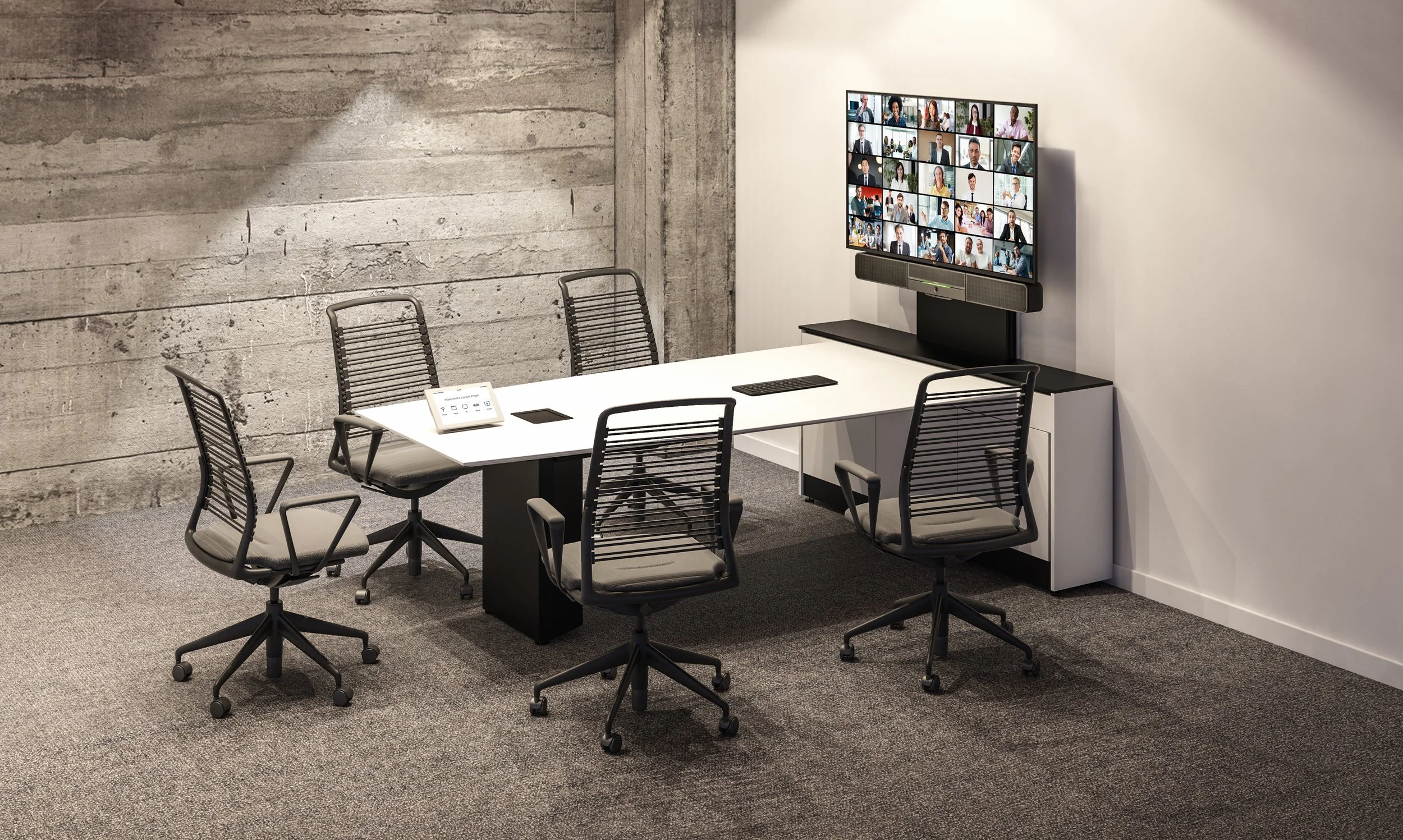How to Create a Modern Huddle Room
Crestron Huddle with Zoom Support
How to Create a Modern Huddle Room
What Exactly Is a Huddle Room?
Huddle rooms are small, convenient meeting spaces within the workplace that enable employees to organise an impromptu meeting without the cumbersome booking process normally associated with conference rooms. Huddle spaces encourage ad hoc conversations while facilitating collaboration in an informal setting. Given the open floor plan design of most modern offices today, huddle spaces offer an intimate space within the workplace for colleagues to gather for brainstorming sessions, team meetings, one on one meetings and small presentations.
The Benefits of Huddle Spaces
Huddle rooms may well be all the rage, but the benefits go far beyond their design aesthetic.
Huddle rooms offer compelling benefits to businesses, a cost efficient use of space being just one.
In addition to the cost factor, huddle work spaces promote casual team work with both local and remote team members. This work style is focused on encouraging swift decision making and getting work done. Given that millennials make up 30% of the current workforce, it makes sense to equip them with the technology and collaborative work environment that motivates them.
Huddle rooms utilise valuable office real estate. When remote workers are in the building, huddle rooms serve as temporary offices that may have previously been unused.
Key Design Factors of Huddle Rooms
Huddle spaces should look and feel different to standard meeting rooms. Their design can vary based on each individual company’s requirements. While casual at their core, there are varying degrees of just how casual they can be with some businesses opting for a very informal beanbag chair setup or a café style arrangement with high tables and stools while others may choose a more traditional style with traditional tables and chairs with a reduced capacity.
When it comes to the technical requirements of a huddle room, some elements to consider include
Connectivity. Huddle rooms should be considered an extension of the primary workspace and as such, will require the same level of undisturbed power and connectivity in order to function successfully. Where appropriate, technical integrations into huddle room furniture can be beneficial if required. At Formwave, we excel at designing bespoke networks to suit an array of corporate workspace needs.
Display and video conferencing. Avoid taking the phrase ‘huddle room’ too seriously and avoid colleagues huddling around a laptop by installing a flat screen TV or monitor within the space. A wall mounted screen that users can connect to will make presentations much easier and more comfortable. Some huddle furniture can have flat screen displays built-in resulting in a space saving, technology efficient workspace. When it comes to video conferencing, don’t forget a conference camera, speakers and a microphone for crystal clear communication.
Wireless Presentation. Huddle rooms are all about maximising time so you need to be able to connect to the flat screen quickly and easily. Wasting time fiddling with wires while you connect your device to the main display is counterproductive.
Consider the accessibility. It is pointless to provide team members with huddle rooms for impromptu meetings when they are awkward to get to and then you discover they are occupied. One of the key benefits of huddle rooms is that they don’t require much space so ensure you have enough of them. In theory, you should not be able to reserve huddle rooms to facilitate ad hoc meetings, but you might find having a room booking system beneficial, allowing you to book, cancel or view availability from your personal device.
And lastly, don’t forget the cappuccino machine. Heads will roll.
If you are interested in creating a huddle space for your company, then why not contact us today to discuss the market leading solutions that Formwave can offer your business.

